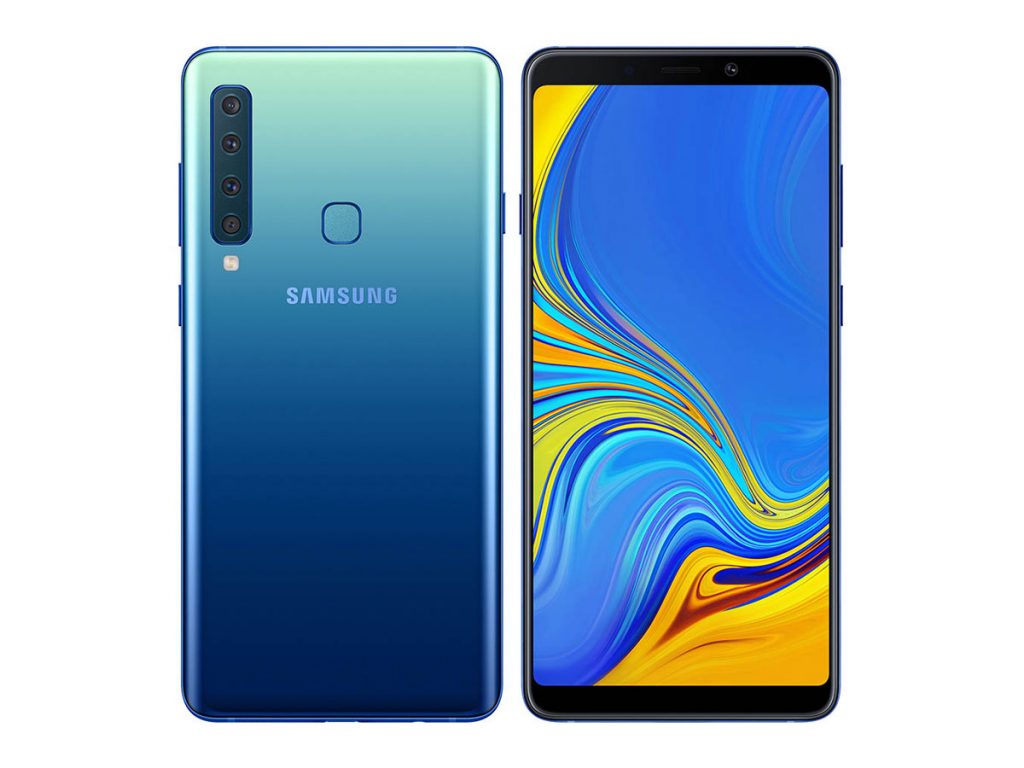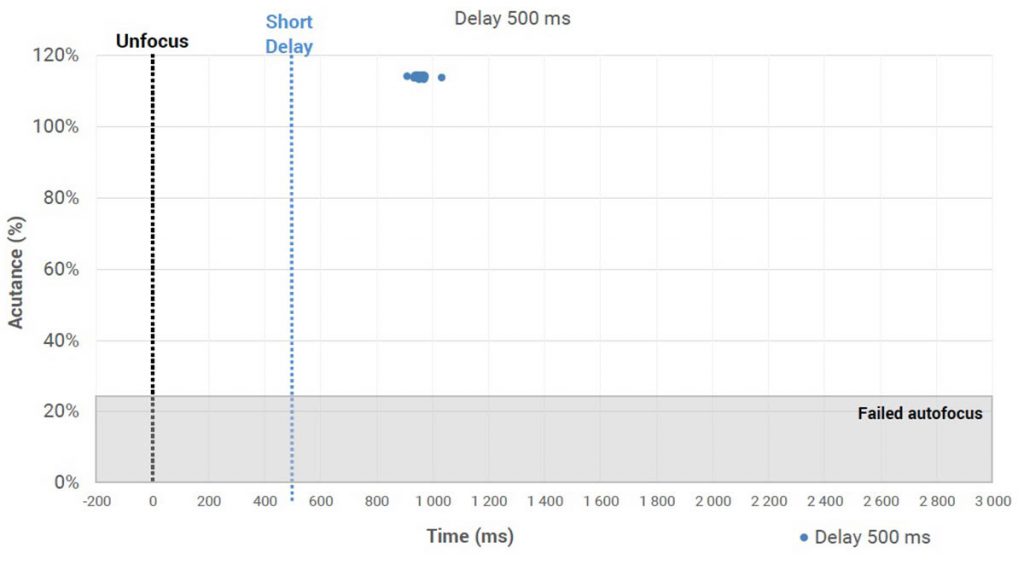Please note: In September 2019, we updated the DXOMARK Mobile test protocol to cover ultra-wide-angle performance and renamed the protocol DXOMARK Camera. We also expanded our low-light testing and created the new Night sub-score, which incorporates the previous Flash score. We have retested this device using the new Wide and Night test protocols and updated the scores in this review, but we have not changed the text from the original review. For more information, please see the articles about our new Wide and Night test protocols.


Samsung Galaxy A9 camera review (originally published April 15, 2019)
Announced in October 2018, the Samsung Galaxy A9 is the highest-level model in Samsung’s mid-range Galaxy A-series of smartphones. What makes it especially noteworthy, however, is that it was the world’s first smartphone to feature a quad camera system.
Samsung created the quad camera setup from a 24Mp f/1.7 main camera supported by a 2x optical zoom 10Mp telephoto camera, an ultra-wide (120-degree) 8Mp f/2.4 camera, and a 5Mp f/2.2 depth camera. The depth camera works with the main camera to apply depth-of-field effects for blurring backgrounds.
Key camera specifications:
- Quad camera setup:
- Primary: 24Mp, 1/2.8-inch sensor with 0.9µm pixels, f/1.7-aperture lens with 77-degree FOV
- Tele: 10Mp, 1/3.9-inch sensor with 1.0µm pixels, f/2.4-aperture lens with 45-degree FOV
- Ultra-wide: 8Mp, 1/4.0-inch sensor with 1.12µm pixels, f/2.4-aperture lens with 120-degree FOV
- Depth: 5Mp, 1/5.0-inch sensor with 1.12µm pixels, f/2.2-aperture lens with 86-degree FOV
- 4K video (3840 x 2160) at 30fps (1080p at 30fps at default settings)
About DxOMark Mobile tests: For scoring and analysis in our smartphone camera reviews, DxOMark engineers capture and evaluate over 1500 test images and more than 2 hours of video both in controlled lab environments and in natural indoor and outdoor scenes, using the camera’s default settings. This article is designed to highlight the most important results of our testing. For more information about the DxOMark Mobile test protocol, click here. More details on how we score smartphone cameras are available here.
Test summary
With an overall DxOMark Mobile Score of 86, the Samsung Galaxy A9 camera finds itself in the company of other mid-range devices and older flagship models in our ranking. While it doesn’t rank among the best of the smartphone cameras we have tested, with a Photo score of 90 points, the A9’s camera is good for still images. It’s particularly good at assessing the exposure of outdoor scenes; it has accurate white balance both indoors and outdoors; and it captures a good level of detail when the zoom is used outdoors.
On the downside, however, images have visible luminance noise in all our test conditions. Even images shot in bright daylight have some granular noise visible in some areas. Further, comparing images from the Galaxy A9 with those from the iPhone 8 reveals the somewhat limited dynamic range of the Samsung camera. It loses detail from both the shadows and the highlights in high-contrast scenes.
As we’ve already mentioned, the A9 usually gets the white balance right, and its color rendering is good outdoors, if sometimes a little desaturated. Indoors, however, colors look undersaturated. More unusually, we also observed some color spread, with faint blocks of color appearing next to or around some colored objects.
With a Texture score of 62, the A9’s texture reproduction is “reasonable” rather than good. However, its outdoor performance is actually pretty good and it’s the low-light performance that really pulls the score down. That said, even outdoors, fine details are also lost in low-contrast areas.
Although we experienced one autofocus (AF) failure when shooting outdoors, the A9’s AF system is usually accurate, if slow. As the chart below shows, even in daylight, the A9 takes close to a second to focus in many cases.
Our tests revealed that the Galaxy A9’s flash usually underexposes a bit, but the results are reproducible. However, the image processing is poor: there’s obvious ringing around the subject, for example, and a lot of detail is lost. Shooting with flash plus additional light also results in an orange cast.
Ringing is also noticeable around objects in other images, and it’s this and the loss of acutance from images that pulls down the A9’s Artifacts score the most.
With its multiple camera setup, the Galaxy A9 has the ability to use both optical and digital zoom. The results are good outdoors, but they fail to impress indoors: for example, even at 2x zoom, there’s a noticeable loss of detail in any shot taken under anything less than our brightest lab test conditions. As light levels fall and the zoom increases, the level of detail drops, while artifacts become more noticeable.
Another impact of the multiple camera system is the ability to recreate the bokeh or blurring effect that simulates shooting at wide apertures with a large sensor. However, our testing suggests that the camera struggles to identify the subject, so the blurring appears unnatural, and in some cases, the camera blurs the wrong part of the image. Furthermore, the transition from sharp to blurred is often unrealistically abrupt.
As you can see in the sample image below, the Galaxy A9 has blurred the top of the subject’s head and applied inconsistent blurring to the background—note how sharp part of the tree on the left appears.
These issues combine to result in a score of 30 for Bokeh. That’s just 5 points over our base-level score and well under the 70 points achieved by the recently-announced (and significantly more expensive) Huawei P30 Pro, which also has a quad camera system.
Our testing shows that the Samsung Galaxy A9’s video footage suffers from low dynamic range and poor color rendering, with badly desaturated colors. In addition, the AF is slow and prone both to adjusting in the wrong direction and to overshooting before finding the target.
As with stills, it the A9 handles white balance well in most conditions, and the stabilization is good with static scenes, but with the issues we’ve already mentioned, plus a loss of detail between frames and low texture resolution, it’s clear that it’s not a strong contender for video—and that is reflected in its Video score of 77 points.
Conclusion
Samsung’s Galaxy A-series smartphones get mid-range billing, and despite the quad camera system, the results from our tests of the Galaxy A9 are distinctly upper-mid-range.
If you’re likely to take the majority of your photographs outdoors, the Galaxy A9 is worth considering, as these conditions play to its strengths, although you should still expect to see some loss of highlight and shadow detail because of its fairly limited dynamic range.
If however, you want a smartphone for capturing portraits and shooting indoors, then it’s not the best choice, especially if you anticipate needing to use flash on a regular basis. The same is true if you plan on recording a lot of video.
Photo pros
- Good exposure outdoors
- Accurate white balance in most conditions
- Fairly good color rendering
Video pros
- Accurate white balance in most conditions
- Effective stabilization with static subjects
- Noise controlled well when shooting outdoors
Photo cons
- Limited dynamic range
- Strong ringing and poor detail with flash
- Unnatural bokeh effect
Video cons
- Slow AF
- Undersaturated colors
- Strong ringing and sharpening visible












DXOMARK encourages its readers to share comments on the articles. To read or post comments, Disqus cookies are required. Change your Cookies Preferences and read more about our Comment Policy.